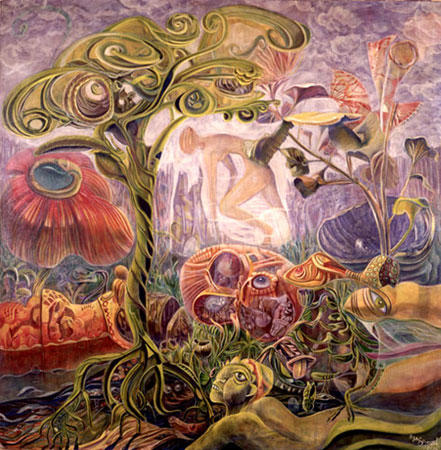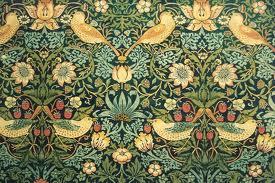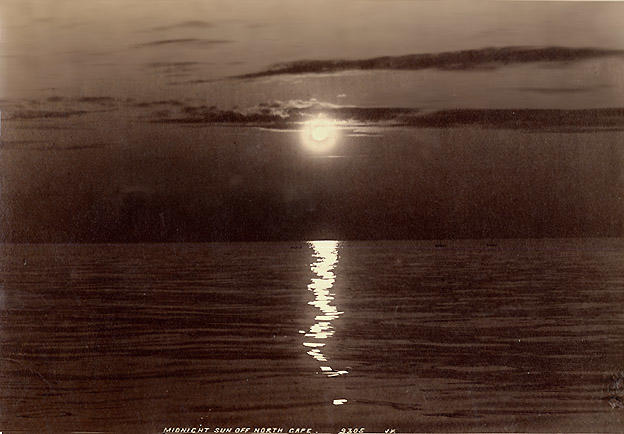It is a common saying, “Believing is seeing”. We believe in what we see. Photographs are the same as what we see. Before photography being invented, people used to make paintings of incidents. Photography has given the world a new insight. Alfred Stieglitz is considered to be the “Father” of modern photography. Throughout his life, he fought for getting the status of a valid art form, for photography. The actual development of modernism in photography was noticed within the two decades after the Great War.
Modernization didn’t mean changing the overall concept or the message of photography, but the addition of photograms, split images, and graphic designs to make posters and magazine covers & pages. According to Wendy Keogh, “From what I understand to be modern is the pursuit of perfection & passion within the work, the clean lines, and the reality is everything modern within the photography movement that is modernism.” (Keogh, 2011). So we deem to understand that in simple words, modernism in photography means the application of special or artistic effects to the photograph to make it more presentable. Talking about truth in photography, Yves Bonnefoy expressed his views as follows:
So a painting expresses truth, about the world, about being, about the place of the artistic image in the world; namely, that what is real – a stone on a hillside path, the petals of a flowering almond tree, a dark cloud moving quickly over a meadow – is beyond representation. At the same time, painting points to the evidence of its own illusionary, to the fact that it is the dream of a perfectly incarnated reality and the effacement of the presentness of stone, almond tree, cloud, and meadow. (Bonnefoy, 1995)
Photography captures the beautiful moments of our lives that can be cherished by us and our children for years to come. Mark C. Taylor and Mark Tansey expressed their idea about truth as follows, “The movement from the appearance of representations to the truth of ideas involves a progressive disentanglement from time and a steady approach to eternity. This process culminates in the perfect union of subject and object, which marks the ecstatic moment when time becomes eternity.” (Taylor et al, 9).
The new techniques that have been developed during the years have made alterations to the photographs a possibility. This is also a face of modernism, but an ugly one. Now anyone can make changes to the photographs. So the originality cannot be guaranteed in cases where photographic evidence is required. Herman Rapaport had a different view about truth in art when he wrote, “Therefore, although I believe there is truth in art, this truth is probably different from what many readers may have in mind when I invoke the term because for me the truth in art is not an essential or essence in a traditional sense. Hence the irony, ‘Is there truth in art?’.” (Rapaport, ix).
But whatever said and done, photography is still a boon to our civilization. When we say that there are means to alter the photographs, we should also be aware that there are countermeasures also that can detect any alteration in the photographs. Here, we are talking about photographs that we want to preserve. And no one would want to alter personal photographs. Michael Brady reasoned, “The truth of their portrayals does not depend on someone else being able to verify it in every particular. We say, for example, that the fictional story in this movie or that book is ‘true to life’ because it ‘captures’ the ‘way things happen,’ or that it ‘shows the nature’ of this or that relationship.” (Brady, 1996).
While quoting Esther shepherd, William John Mitchell wrote, “A small cardboard butterfly with a loop of fine wire attached, using which it could be fastened to a finger. This famous photograph is certainly not worthless as evidence: it told the truth – at least about some things – but it did not restrict itself to nothing but the truth.” (Mitchell, 2001a). William John Mitchell also wrote, “Thus we can begin to see that the truth, falsehood, or fictionality of an image is not simply a congenital property – one conferred at birth by a particular capture or construction process.” (Mitchell, 2001b).
Kathryn Schulz wrote, “Likewise, ‘Believing Is Seeing,’ though perceptive about photography, is fundamentally concerned with something very different: epistemology.” (Schulz, 2011). Paintings also depict the truth. But it is a virtual truth. We have to imagine a painting. The idea of the painter behind making the painting has to be understood. If we can understand that, then the truth comes in front of us. Scott Walden wrote, “We, therefore, analyze truth not in terms of a relation between the painting and the world but in terms of a relationship between what we see in the painting and the world.” (Walden, 2008a).
As mentioned earlier, during earlier times, people used to make paintings if they wanted to record an incident like any marriage, any party, etc. paintings were also made to depict the sceneries, animals, war scenes, etc. But photographs are more authentic than the paintings. Even clarity wise, photographs are far better. Scott Walden wrote, “How to interpret the claim that there is a better correlation between truth and photographs than between truth and handmade images, it is best simply to remain agnostic about the issue. But such agnosticism doers do not render futile a search for truth in photography.” (Walden, 2008b).
By photography, today we can see the events of years gone by. We know how our forefathers looked like. How our earlier leaders dressed, how they lived, etc. It was photography (and video) that recorded the fateful day of 9/11 when terrorists attacked the World Trade Centre. Doctors worldwide exchange photographs of critical cases so that if they face any such case, they can always take heed from the photographs. This has helped mankind in getting better treatment.
There are so many aspects that prove the truth in photography. One of the most important truths is that the space shuttle captures pictures of the earth and sends them to the concerned laboratories for evaluation. These photographs help the scientists in forecasting the weather conditions, worldwide. Any dangerous turn of events can be prevented. We go to see movies. What are the movies? They are a reality, the truth may be virtual. But we see what has been photographed. So it is sensible to say that there is truth in photography.
“Echoes” by Olga Spiegel (1970s)

Olga Spiegal worked as a textile design. The design of the patterns created a visual fantasy that inspired her to do oil paintings on paper. Initially, she used to have still lived as the subject matters for her paintings. She used to paint randomly and gradually she started to see various images. Entering virtually into the images, she found a different world inside the paintings where there were no limitations. Gradually, Spiegel turned towards painting more realistic images that were influenced by the biological facts of the human body.
“Echoes” is one such painting by Olga Spiegel wherein she has depicted the form of the human body. There is a glimpse of the virtual ‘truth’ in the picture. In my interpretation, these all forms are echoes of two bodies – male and female. Their love for each other is being echoed in the jungle. Notably, Olga has used a variety of colors and all of them are bright. This shows the brightness in Olga’s mind. She wants things around her to be lively. The painting also depicts that there is life all around and even the lifeless things come alive. In her paintings, the inner self of a person is revealed by way of images.
“Kiss” by Andy Warhol

Andy Warhol was a very ambitious painter. He used to work extensively on his paintings until he became famous. The medium that Andy used was a silkscreen. He wanted to tread in the footsteps of corporations that manufactured consumer merchandise on a large scale. He came out with a novel idea creating his paintings. He acquainted famous people from different walks of life, who would come and spend time at his factory. These people also acted in films made by him and became famous by the name Warhol Superstars.
“Kiss” is a beautiful work by Andy that is focused on the female lips. In my interpretation, the four colors of lips depict the multifarious nature or behavior of women. Women can adapt to any circumstance and mold themselves according to the requirement and as per the likeness of others.
The combination of colors is such that pleases the eyes. They are simple but at the same time, attractive too. Another interpretation can be that women of different creeds and societies are kissing each other. Andy disregarded society and its moral conduct. He depicted the human relation from different angles (including same-sex relations and nudity). In this particular picture, the ‘truth’ is visible in the open lips. More paintings of Andy can be viewed at
“The Strawberry Thief” by William Morris

“Strawberry Thief” was the most beloved paintings of William Morris. The idea generated when he saw thrushes eating the strawberries from a tree in his garden at Kelmscott Manor. Even though he was losing his favorite fruit, he stopped his employees from scaring away the birds. The same scene has been depicted in this painting. The medium of his paintings was canvas. Natural indigo colors have been used in this painting. The painting was adapted by Beth Russell who brought into the market kits that included large canvas with the painting that could be made into cushions or chair seats. Seeing the response, Morris got a patent for this design. The patented design was printed using alizarin (red) and weld (yellow) dyes being added to the blue and white base.
The name is very apt for the painting because the thrushes can be seen eating away the strawberries. The ‘truth’ of Morris’s view can be seen in the print that he made. The original print can be viewed at the Victoria & Albert Museum.
“The Woman and her Fish” By Man Ray

Born in Philadelphia in 1890, Man Ray was considered to be the most prominent photographer of his times. In the year 1920, while working on his projects, he had to take photographs of his artworks. He realized the potential of photography and decided to pursue it. He photographed in the fashion field and also as a freelancer. By 1925, he established himself as a respected member of the Surrealist movement.
The photograph shown above is a masterpiece of Man Ray’s work. It has been photographed in black and white. My interpretation says that Ray wanted to show the darker side of human beings by using the black and white theme. The woman is sitting nude on a bed (supposedly), waiting for someone. She has her headgear on, which means that she has just unrobed herself. But Ray has maintained the dignity by showing the hind portion of the lady. The lady has the letter ‘f’ (two nos.) tattooed on her back. According to Ray, the letter ‘f’ denotes a fish. Just as the fish is helpless, this lady also seems to be helpless. This is the dark ‘truth’ of mankind.
“Midnight Sun off North Cape” by William Dobson Valentine

Every year from May 14 to July 30, people living in Norway’s North Cape can see the sun even at midnight. This is because it being very close to the Arctic Circle. William Dobson Valentine made several images depicting the midnight sun. But the one shown here is the most expressive. The reason being there is nothing between the viewer and the horizon. Even the small waves in the water can be seen clearly. The sunlight reflection in the water looks so soothing. The waves give the reflection such an impression that it seems a painter has applied brush strokes in a zigzag manner.
Norway is a huge country but less of a population. The resources and educational facilities are not good. Students, who want to get a higher education, have to move out of the country. This picture can be interpreted as an inspiration to such students. Night signifies the darkness and suns the light. Philosophically, we can say that there is light in the darkness. In other words, students who move out should stay here only and try to search for meaningful things in hopes of despair. One day they will succeed. The picture is in Albumen print (1890). Here again, the hidden ‘truth’ of life is visible.
References
Bonnefoy, Y., 1995. The Lure and the Truth of Painting: Selected Essays on Art. Chicago, United States: University of Chicago Press.
Brady, M., 1996. Art, Mere Things, and Truth Requirements. Web.
Keogh, W., 2011. What do you understand by Postmodernism? Web.
Mark, C. T., Mark, T., 1999. The Picture in Question – Mark Tansay & the Ends of Representation. Chicago, United States: University of Chicago Press.
Mitchell, W. J., 2001a. The Reconfigured eye: Visual Truth in the Post-photographic Era. United States: The MIT Press.
Mitchell, W. J., 2001b. The Reconfigured eye: Visual Truth in the Post-photographic Era. United States: The MIT Press.
Rapaport, H., 1997. Is there Truth in Art? New York, United States: Cornwell University Press.
Schulz, K., 2011. Errol Morris Looks for the Truth in Photography. Web.
Walden, S., 2008a. Photography and Philosophy: Essays on the Pencil of Nature. Malden, United States: Blackwell Publishing.
Walden, S., 2008b. Photography and Philosophy: Essays on the Pencil of Nature. Malden, United States: Blackwell Publishing.